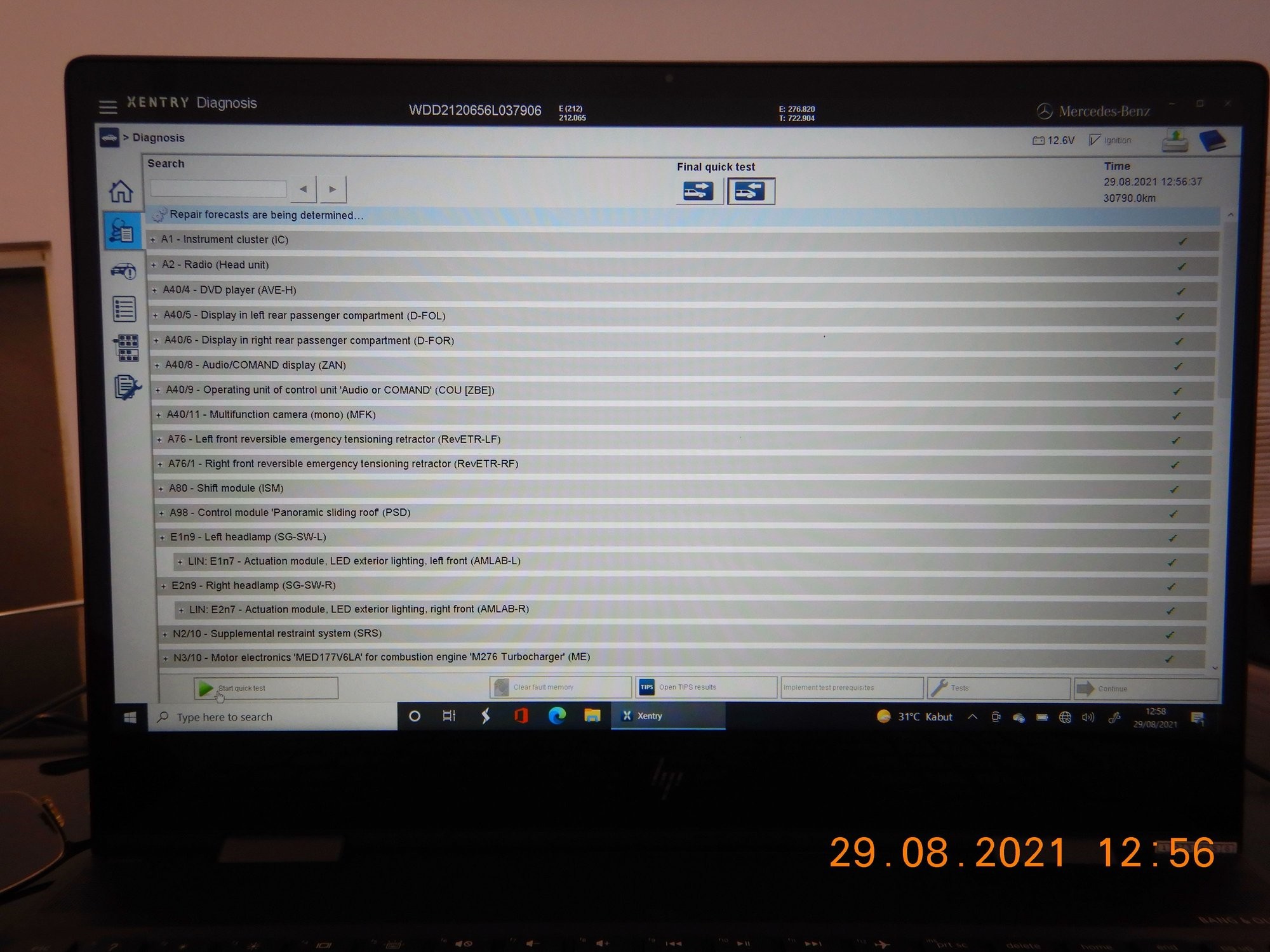For automotive repair professionals and car enthusiasts keen on performing in-depth diagnostics comparable to dealer-level systems, but without the need for complex coding and programming, Xentry PassThru emerges as a compelling solution. This article aims to explain what Xentry PassThru is, its benefits, and how it can empower you with advanced diagnostic capabilities for Mercedes-Benz vehicles and potentially other brands.
The advent of “Right to Repair” legislation in regions like Europe and the USA has mandated that vehicle manufacturers provide independent workshops access to their diagnostic and repair information. This landmark shift allows independent mechanics and passionate car owners to tap into manufacturer-level data for conducting thorough vehicle assessments and repairs. Daimler, the manufacturer of Mercedes-Benz, complies with these regulations by offering Xentry PassThru, a gateway to their diagnostic server resources for a fee-per-hour basis.
Xentry PassThru leverages the SAE J2534 standard, a universal protocol that enables a single Vehicle Communication Interface (VCI) to be used across various vehicle brands. This means that workshops and individuals can employ certified J2534 interface devices – not exclusive to Mercedes-Benz – to access diagnostic data from a multitude of manufacturers adhering to this standard.
While sophisticated diagnostic systems like full Xentry with multiplexers and Vediamo software offer extensive capabilities including coding and programming, Xentry PassThru carves a niche by focusing on diagnostic prowess at a more accessible level.
The allure of PassThru lies in its cost-effectiveness and ease of use. A compliant J2534 interface, often available in clone versions from online marketplaces for under $30, resembles a small OBD2 dongle. Coupled with a standard Windows laptop (Windows 7 or 10), and readily available software guidance – often found through online video tutorials by searching “Xentry 2020 PassThru” – entry into advanced diagnostics becomes surprisingly attainable.
It is crucial to understand that Xentry PassThru, in its fundamental form, is primarily designed for diagnostic operations. It unlocks a wealth of information and testing functionalities, enabling comprehensive vehicle health scans and in-depth module analysis. For users primarily interested in understanding their vehicle’s condition through manufacturer-level diagnostics, without delving into complex coding or module programming, Xentry PassThru presents an invaluable tool.
Diagnostic Capabilities Unveiled
Xentry PassThru empowers users to perform a spectrum of diagnostic tests that were previously the exclusive domain of authorized dealerships. These capabilities extend far beyond basic OBD2 code reading, offering a deeper dive into the intricate systems of modern vehicles.
For instance, Xentry PassThru allows for detailed control and testing of vehicle subsystems, such as air conditioning. Features like 7-way venting air distribution, enabling customized airflow to specific areas like the legs and body, become accessible for testing and verification.
Furthermore, advanced functionalities such as disabling automatic fresh air flap activation after a set time – a feature some users find undesirable – can be managed through diagnostic commands within Xentry PassThru.
The depth of data accessible through Xentry PassThru is a significant advantage. Users gain access to manufacturer-specific diagnostic trouble code (DTC) interpretations, eliminating the ambiguity often encountered with generic OBD2 scanners. This direct insight into Mercedes-Benz’s diagnostic language provides a clearer understanding of vehicle issues.
Examples of in-depth tests include component-level diagnostics like compression testing and injector analysis, offering granular insights into engine performance and component health.
Limitations: Diagnostics, Not Coding
It’s crucial to reiterate that Xentry PassThru, as discussed here, primarily serves as a diagnostic tool. While it grants access to a vast array of diagnostic functions and tests, it typically does not extend to advanced coding or programming capabilities. For functionalities like SCN coding, control unit programming, or complex modifications, the full suite of Xentry with specialized hardware and software may be required.
Conclusion
Xentry PassThru represents a significant advancement in accessible automotive diagnostics. By leveraging the Right to Repair framework and the SAE J2534 standard, it brings manufacturer-level diagnostic capabilities within reach of independent workshops and dedicated car enthusiasts. For those seeking to deeply understand their Mercedes-Benz vehicles through comprehensive health scans and advanced testing, without the need for coding functionalities, exploring Xentry PassThru is a worthwhile endeavor.
References
- Daimler Xentry Pass Thru EU: https://b2bconnect.daimler.com/GB/workshop-solutions/diagnosis/xentry-pass-thru-eu
- SAE J2534 Standard: https://www.sae.org/learn/content/c0733/
- SAE J2534-2 Standard: https://www.sae.org/standards/content/j2534/2_201901/
- Introduction to SAE J2534 Pass-Thru Programming: https://www.kvaser.com/developer-blog/sae-j2534-introduction-part-1/

